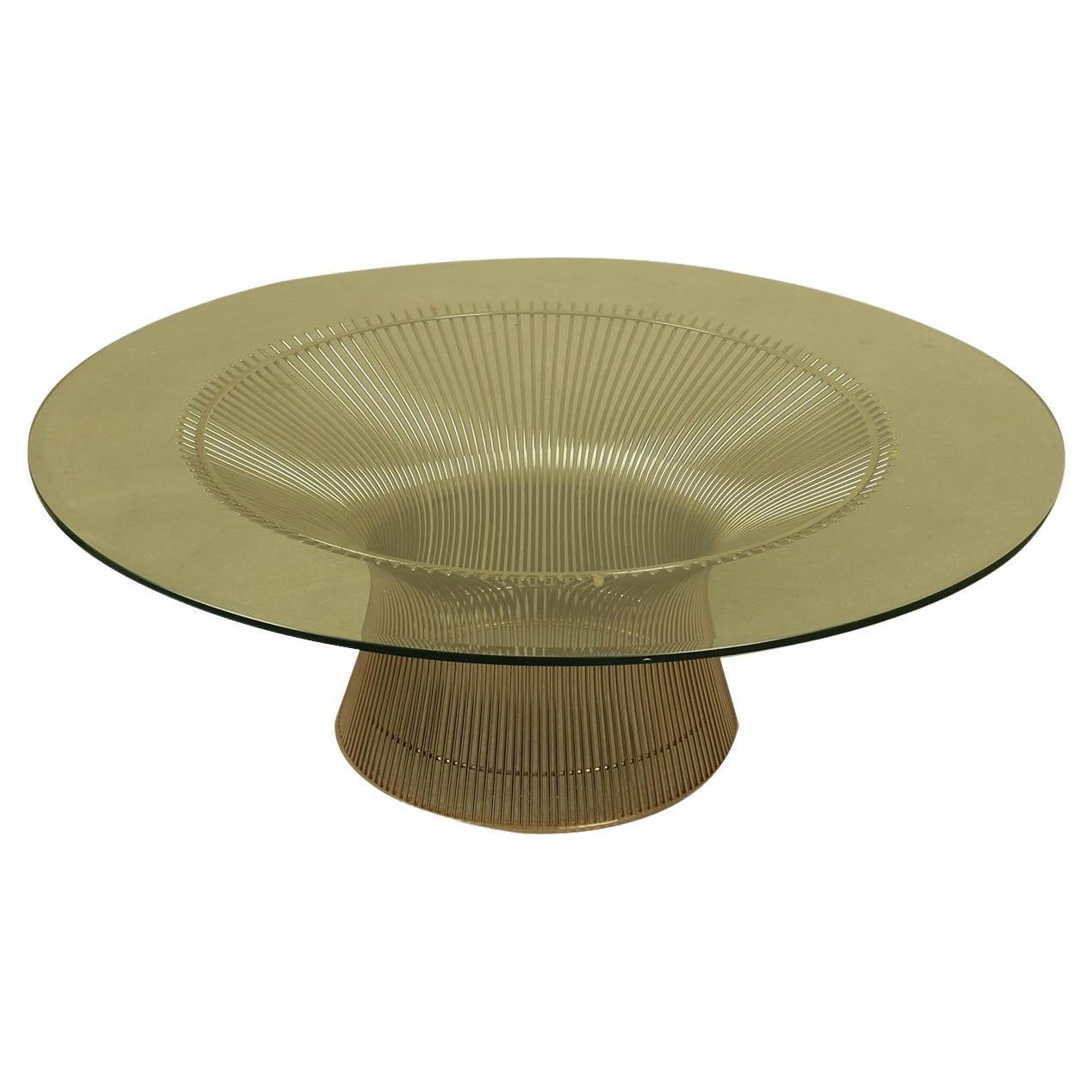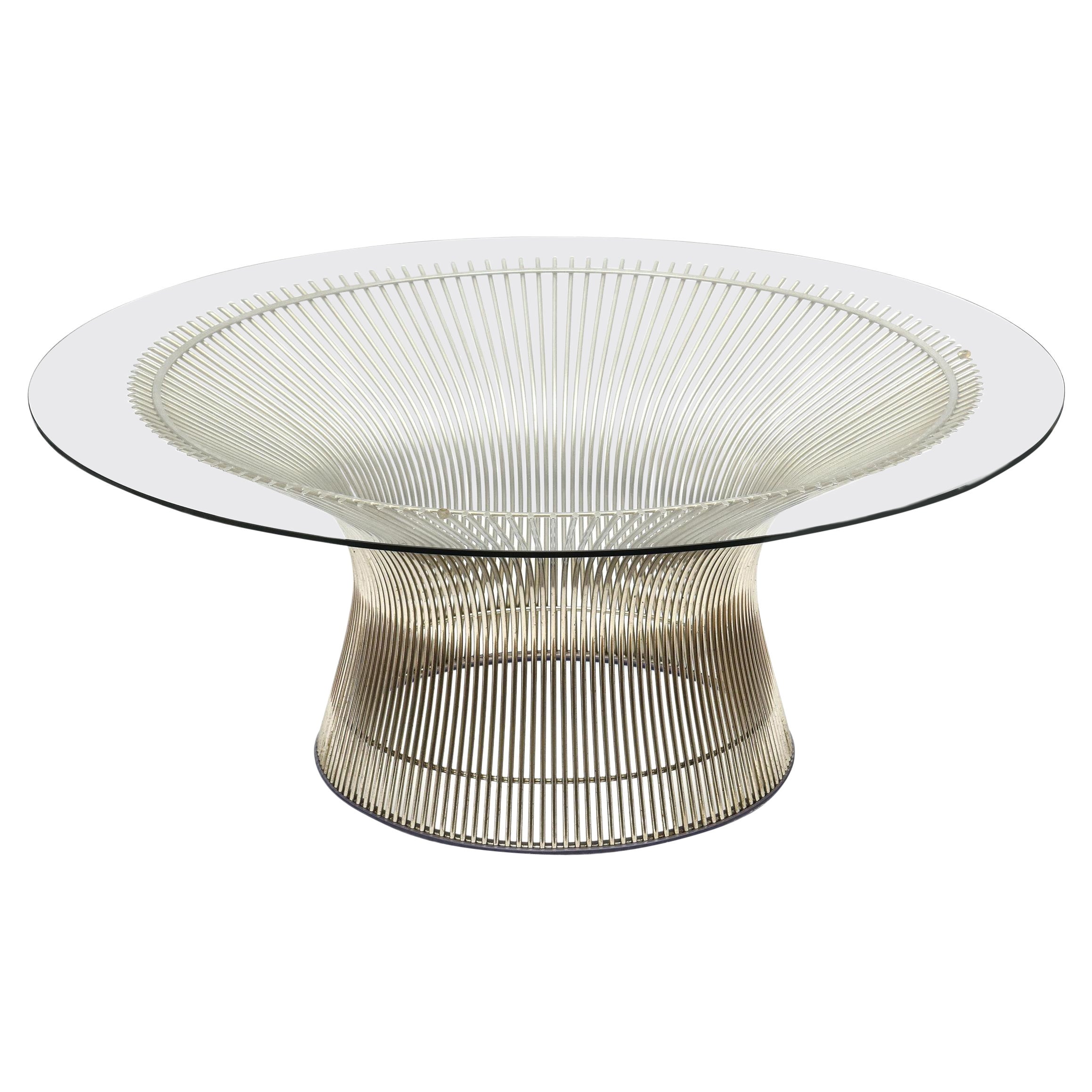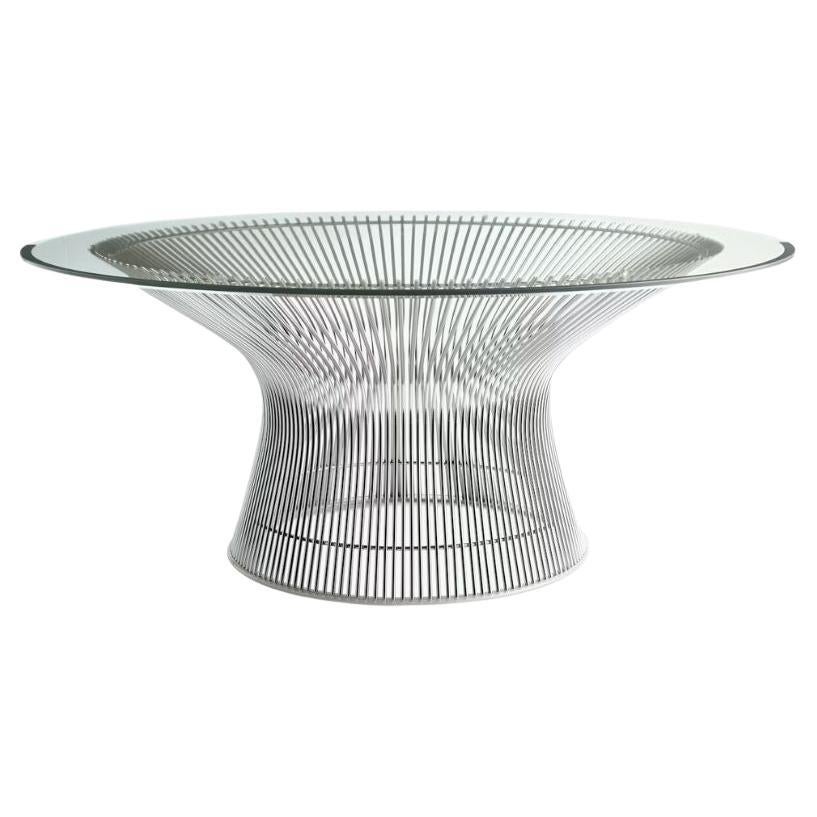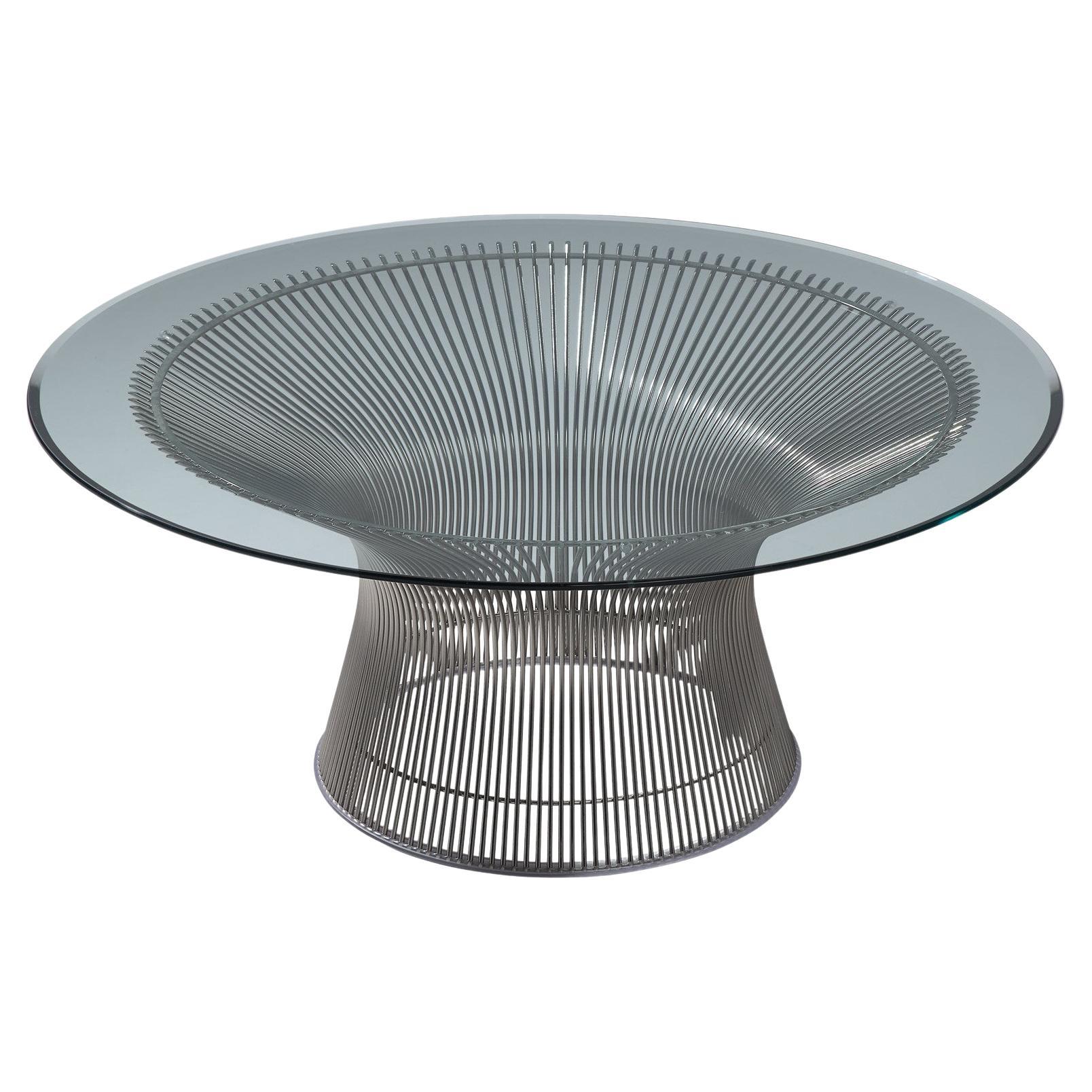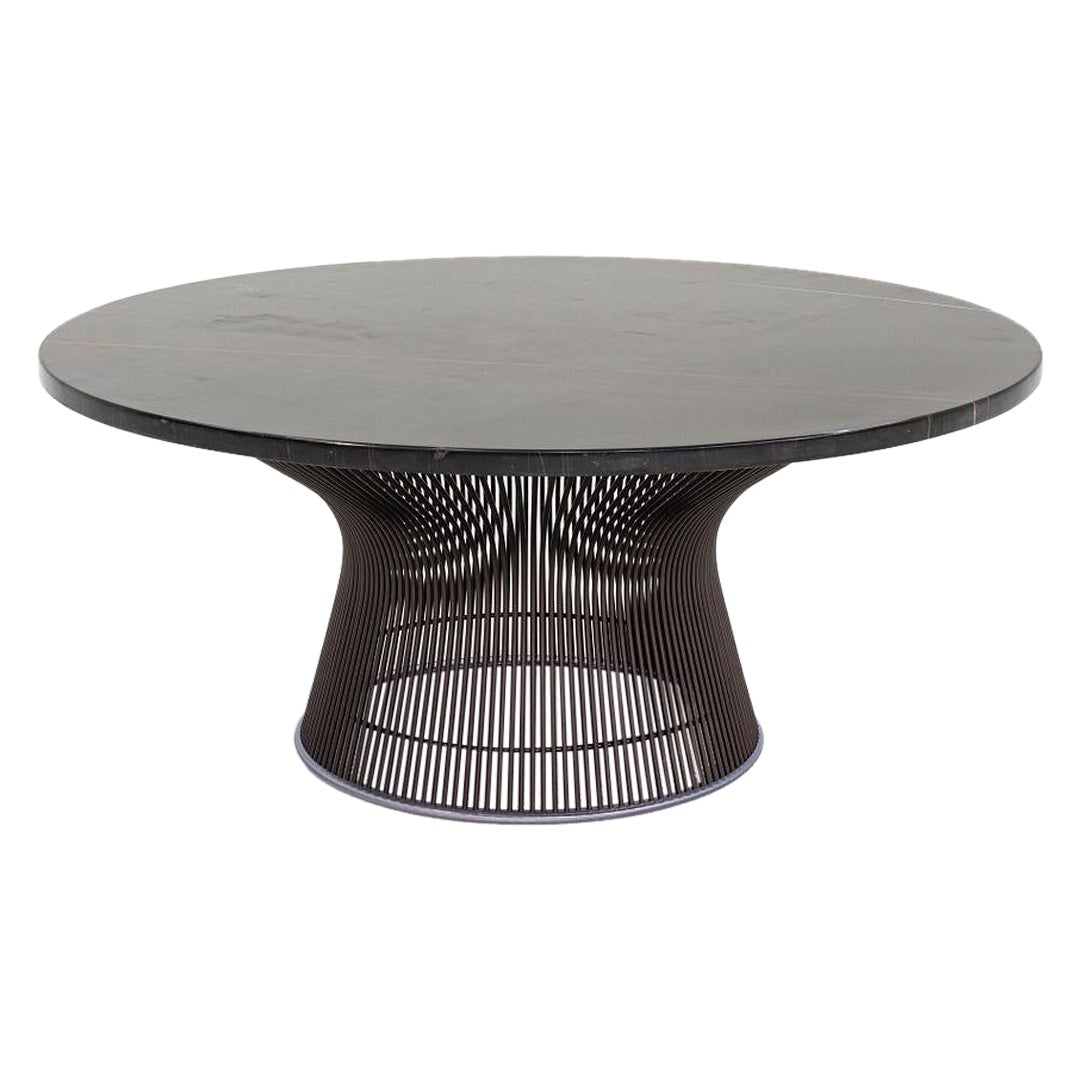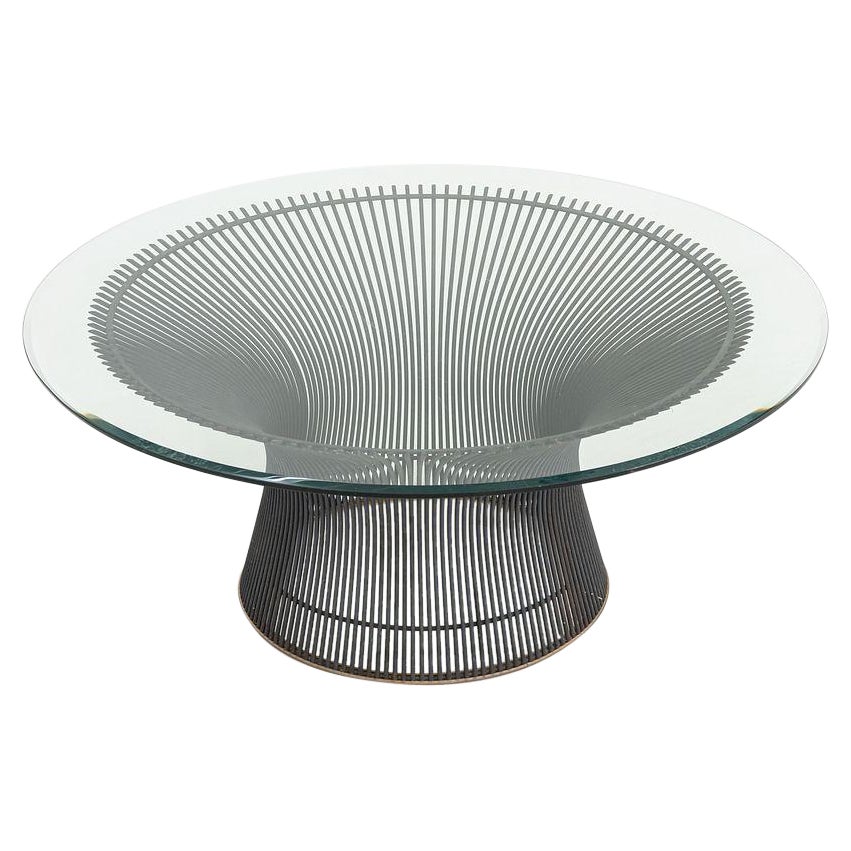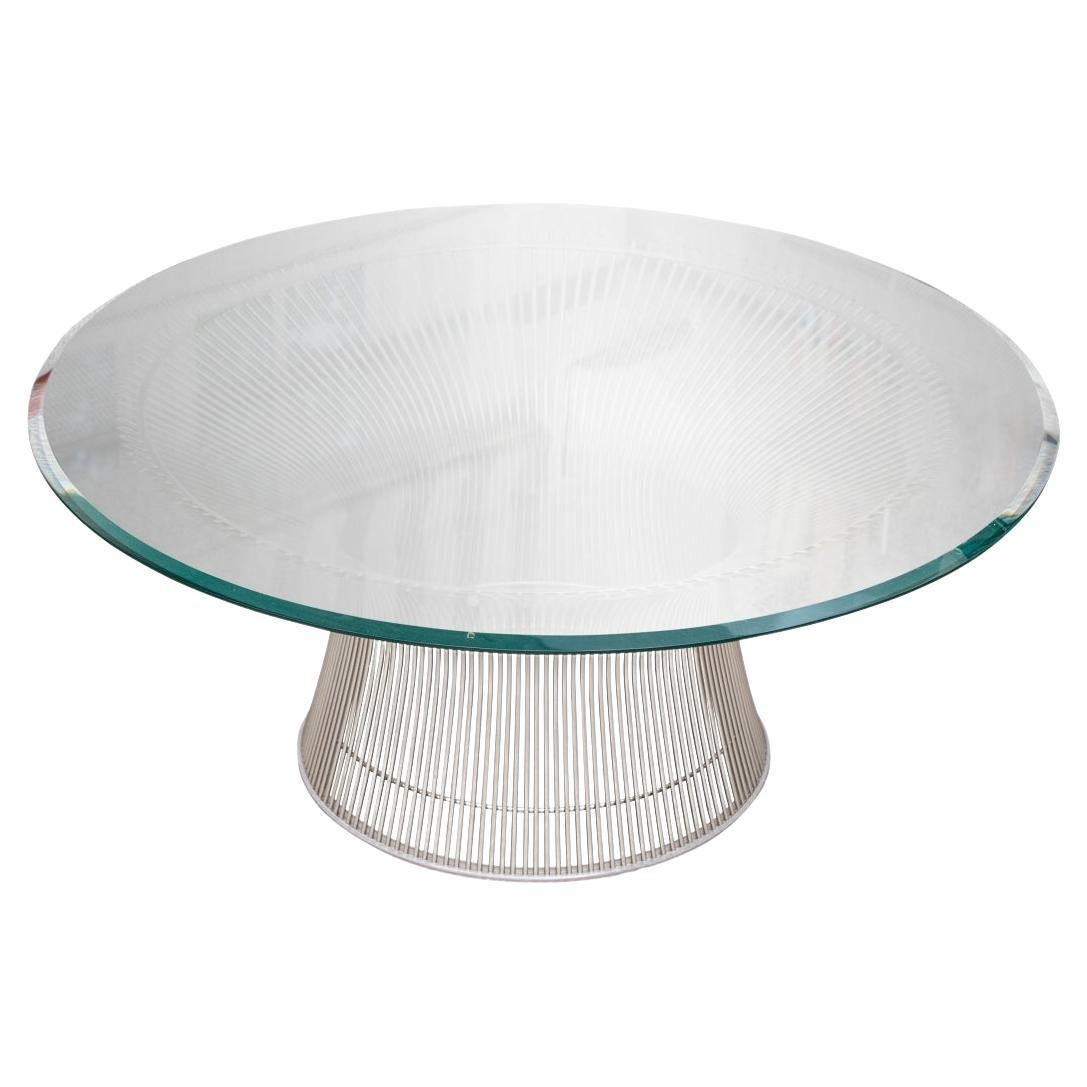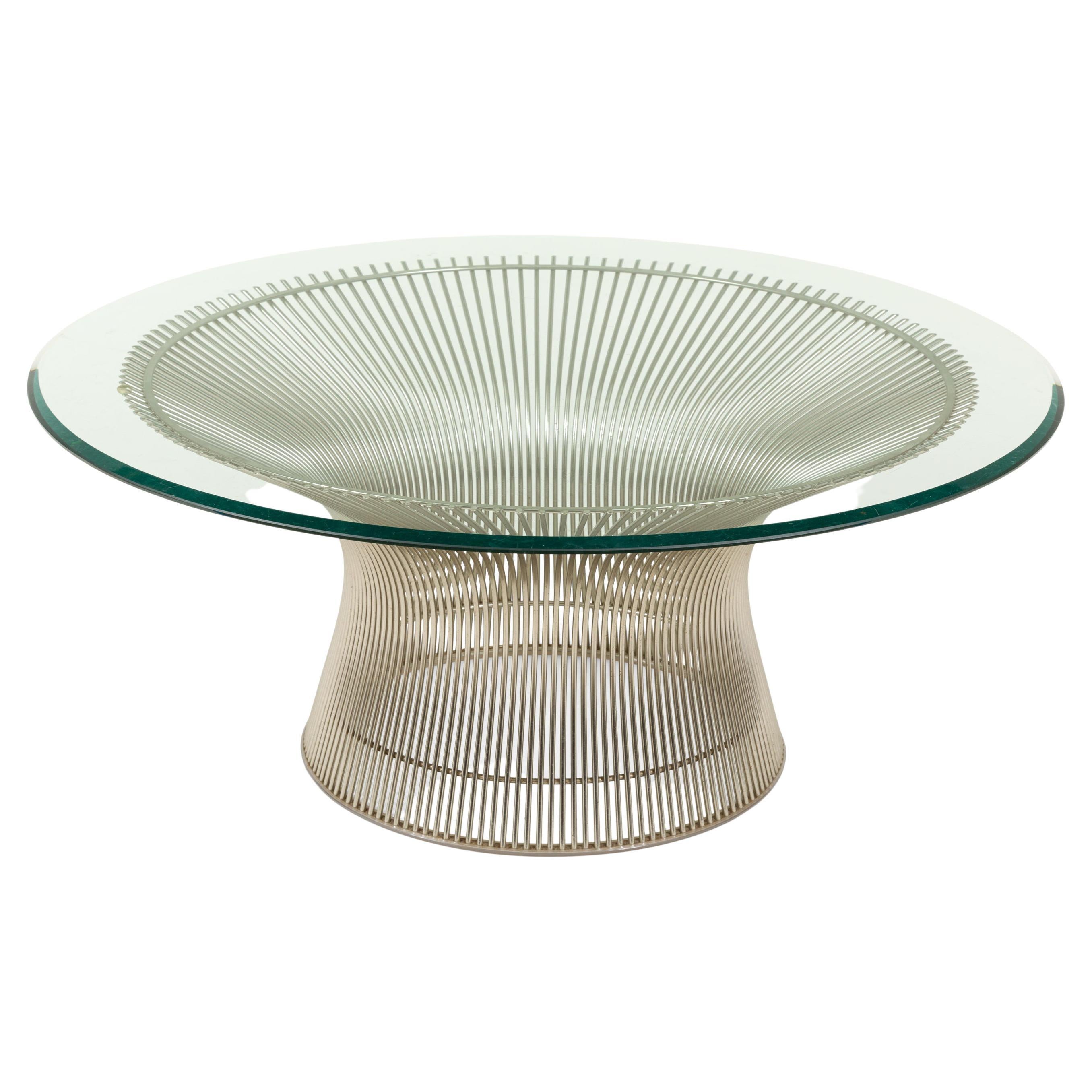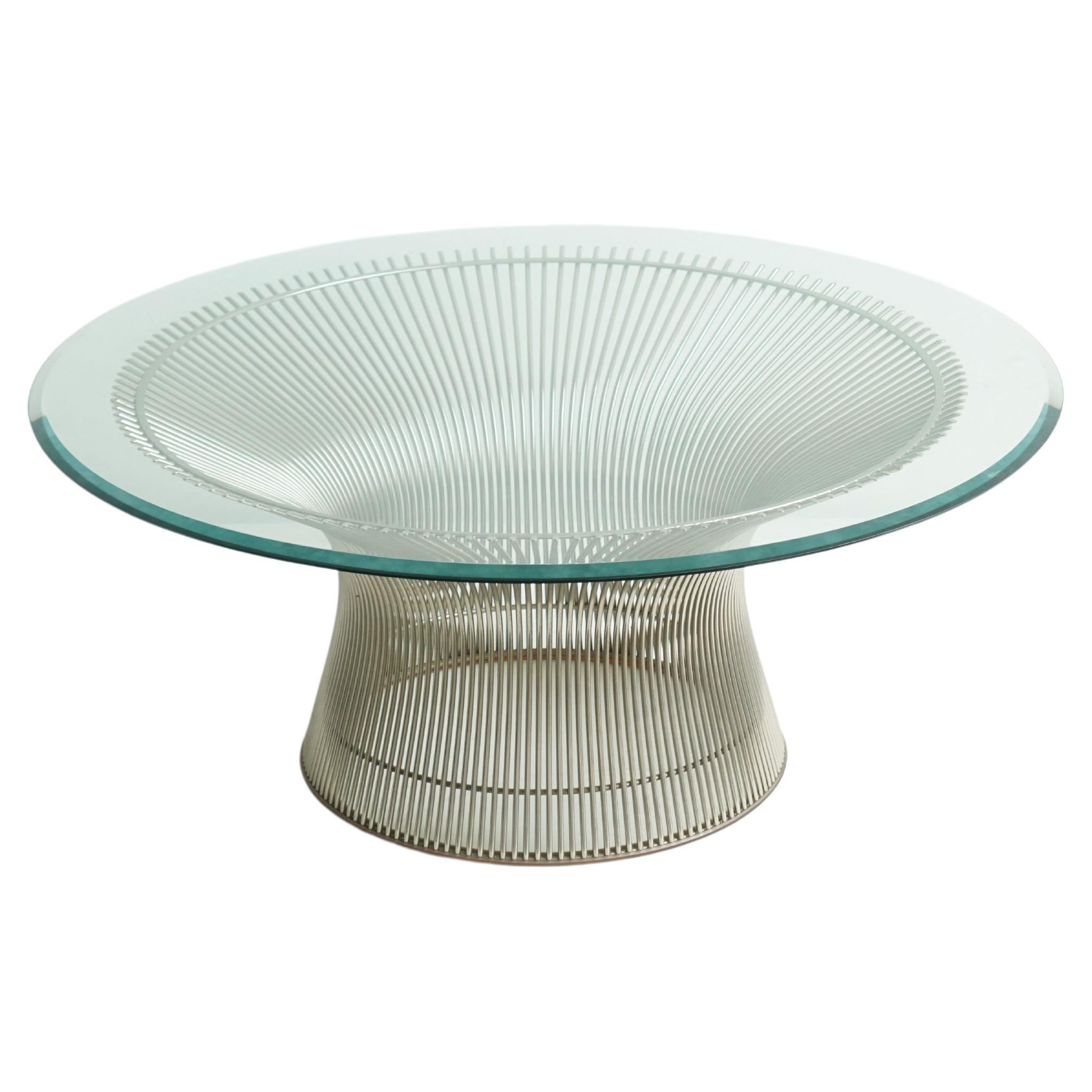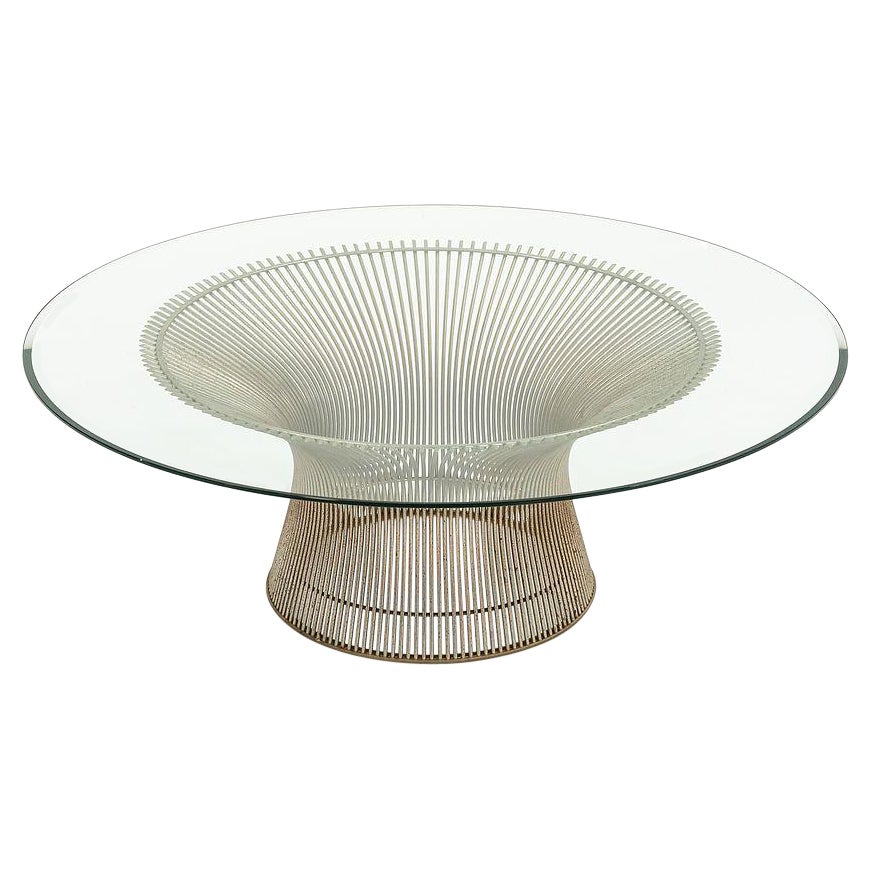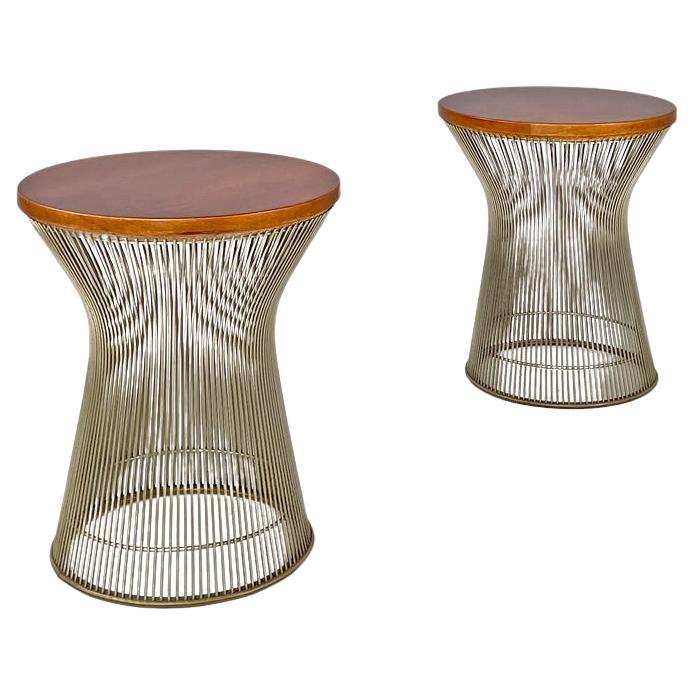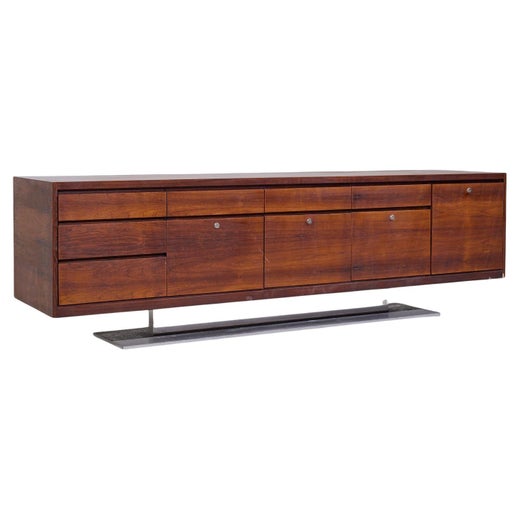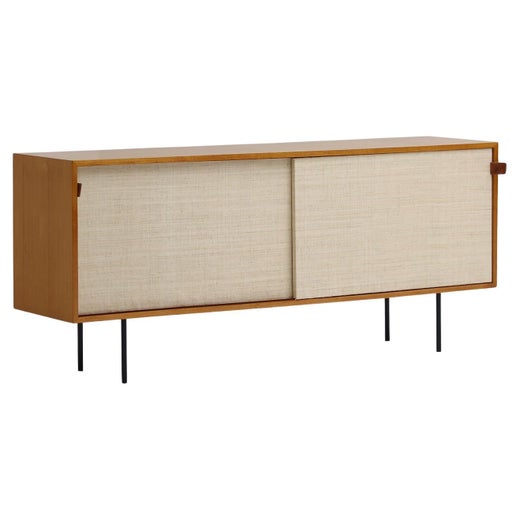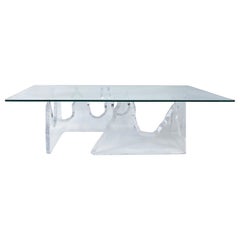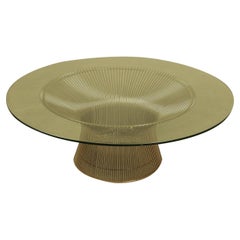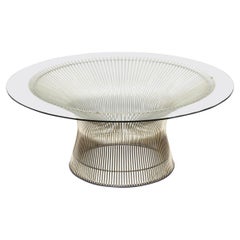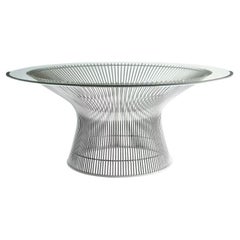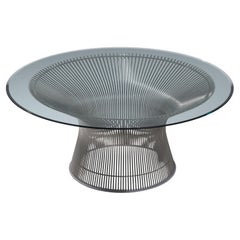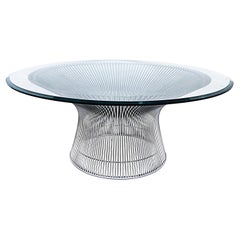
Warren Platner Knoll Glass Top Wire Base Coffee Table, 1966 Designed
View Similar Items
Warren Platner Knoll Glass Top Wire Base Coffee Table, 1966 Designed
About the Item
- Creator:Knoll (Manufacturer),Warren Platner (Designer)
- Design:Platner Coffee TablePlatner Series
- Dimensions:Height: 15.5 in (39.37 cm)Diameter: 36 in (91.44 cm)
- Style:Mid-Century Modern (In the Style Of)
- Materials and Techniques:
- Place of Origin:
- Period:
- Date of Manufacture:1966
- Condition:Wear consistent with age and use. Patina and some pitting oxidation to the metal bases as depicted.
- Seller Location:Miami, FL
- Reference Number:1stDibs: LU1974326924952
Warren Platner
Though vintage Warren Platner chairs, sofas and interiors are icons of mid-century modernism, the architect and furniture designer took his stylistic inspiration from as far back as 18th-century France, once saying about his seminal collection for Knoll that his design intent was to evoke “the kind of decorative, gentle, graceful kind of design that appeared in period style like Louis XV.”
Indeed, the marriage of modern sensibility and classical grace is a marker of Platner’s style across furnishings and interiors — both genres in which he left an enduring legacy.
Born in 1919 in Baltimore, Maryland, Platner studied architecture at Cornell before cutting his teeth working for design icons like Eero Saarinen and Kevin Roche, eventually serving as head of interior design in the latter’s office. In 1965, Platner opened his own office, in Greenwich, Connecticut, where he continued to hone his particular brand of graceful modernism.
Knoll released the Platner Collection of seating and tables in 1966. (Originally designed in 1962, the suite took nearly four years of development to bring to life.)
The decorative bent-metal-and-glass pieces — an armchair, a dining table and more — make certain nods to the trademarks of his former employers, but also to the shapes of historic European furniture. The sculptural elegance of his line recalls Saarinen’s iconic Tulip collection, which includes armchairs and dining tables, while his materiality aligns with Roche’s cutting-edge use of glass and metal for the headquarters of the Ford Foundation in New York.
Many of Platner’s Knoll pieces would go on to find homes in a certain fabled locale: the Windows on the World restaurant at the original World Trade Center, whose interiors Platner was tapped to outfit in the mid-1970s. Upon the opening of the restaurant in 1976, New York Times architecture critic Paul Goldberger dubbed its style “sensuous modernism” — an apt tagline for Platner’s oeuvre as a whole.
Platner died in 2006 at the age of 86. His furniture is still produced by Knoll, and original examples — along with idiosyncratic custom works he created for interior design clients — are coveted by collectors today.
Find vintage Warren Platner furniture on 1stDibs.
Knoll
As a company that produced many of the most famous and iconic furniture designs of the 20th century, Knoll was a chief influence in the rise of modern design in the United States. Led by Florence Knoll, the firm would draw stellar talents such as Ludwig Mies van der Rohe and Eero Saarinen into its compass. Their work would help change the face of the American home and office.
The company was formed in 1938 by the German immigrant Hans Knoll. He first worked with his fellow ex-pat, the Danish designer Jens Risom, who created furniture with flowing lines made of wood. While Risom served in World War II, in 1943 Knoll met his future wife, Florence Schust. She had studied and worked with eminent emigré leaders of the Bauhaus, including Mies, Walter Gropius and Marcel Breuer. She won Knoll over with Bauhaus notions of industrial arts, and an aesthetic that featured flat and tubular metal frames and angular forms. When Hans died in a car crash in 1955, Florence Knoll was appointed head of the company. It was as much through her holistic approach to design — a core division of the firm was dedicated to planning office systems — as Knoll's mid-century modern furnishings themselves that she brought about the sleek and efficient transformation of the American workplace.
Today, classic Knoll furnishings remain staples of modern design collections and decor. A history of modern design is written in pieces such as the elegant Barcelona chair — created by Mies and Lilly Reich — Saarinen’s pedestal Tulip chair, Breuer’s tubular steel Wassily lounge chair and the grid-patterned Diamond chair by Harry Bertoia.
As you can see from the collection of these designs and other vintage Knoll dining chairs, sofas and tables on 1stDibs, this manufacturer's offerings have become timeless emblems of the progressive spirit and sleek sophistication of the best of modernism.
More From This Seller
View AllLate 20th Century American Modern Coffee and Cocktail Tables
Metal
Late 20th Century American Mid-Century Modern Coffee and Cocktail Tables
Lucite
Late 20th Century American Coffee and Cocktail Tables
Marble
Late 20th Century American Coffee and Cocktail Tables
Rattan, Glass
Late 20th Century Philippine Coffee and Cocktail Tables
Rattan, Glass, Paint
Vintage 1970s American Mid-Century Modern Coffee and Cocktail Tables
Glass, Lucite
You May Also Like
Vintage 1970s American Mid-Century Modern Coffee and Cocktail Tables
Steel
Vintage 1950s American Mid-Century Modern Coffee and Cocktail Tables
Chrome
Mid-20th Century American Mid-Century Modern Coffee and Cocktail Tables
Nickel
Vintage 1960s American Mid-Century Modern Coffee and Cocktail Tables
Steel
2010s American Modern Coffee and Cocktail Tables
Marble, Steel
Vintage 1960s American Modern Coffee and Cocktail Tables
Steel
